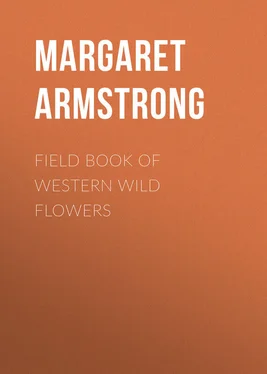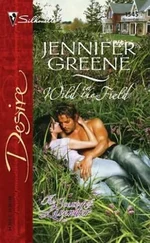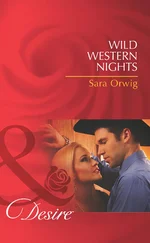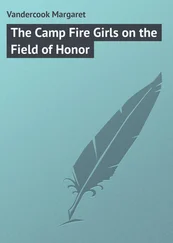Margaret Armstrong - Field Book of Western Wild Flowers
Здесь есть возможность читать онлайн «Margaret Armstrong - Field Book of Western Wild Flowers» — ознакомительный отрывок электронной книги совершенно бесплатно, а после прочтения отрывка купить полную версию. В некоторых случаях можно слушать аудио, скачать через торрент в формате fb2 и присутствует краткое содержание. Жанр: foreign_antique, foreign_prose, на английском языке. Описание произведения, (предисловие) а так же отзывы посетителей доступны на портале библиотеки ЛибКат.
- Название:Field Book of Western Wild Flowers
- Автор:
- Жанр:
- Год:неизвестен
- ISBN:нет данных
- Рейтинг книги:5 / 5. Голосов: 1
-
Избранное:Добавить в избранное
- Отзывы:
-
Ваша оценка:
- 100
- 1
- 2
- 3
- 4
- 5
Field Book of Western Wild Flowers: краткое содержание, описание и аннотация
Предлагаем к чтению аннотацию, описание, краткое содержание или предисловие (зависит от того, что написал сам автор книги «Field Book of Western Wild Flowers»). Если вы не нашли необходимую информацию о книге — напишите в комментариях, мы постараемся отыскать её.
Field Book of Western Wild Flowers — читать онлайн ознакомительный отрывок
Ниже представлен текст книги, разбитый по страницам. Система сохранения места последней прочитанной страницы, позволяет с удобством читать онлайн бесплатно книгу «Field Book of Western Wild Flowers», без необходимости каждый раз заново искать на чём Вы остановились. Поставьте закладку, и сможете в любой момент перейти на страницу, на которой закончили чтение.
Интервал:
Закладка:
Ruby Lily
Chaparral Lily
Lílium rubéscens
White, pink
Summer
Cal., Oreg.
A glorious plant, from two to five feet tall, with leaves mostly in whorls, with rippled edges. The stem bears a magnificent cluster of blossoms, most wonderful in coloring, for the buds and young flowers are white, dotted with purple inside, with yellow anthers and a pale-green pistil, but they gradually change to pink, and deepen to ruby-purple as they fade, and the anthers and pistil also darken in color. The effect of the whole cluster is therefore white at the top, shading through pink to almost crimson below. The flowers are even more deliciously fragrant than the Washington Lily, which they resemble, except that they are not quite so large as the latter and stand more erect and the petals are not so spreading. This usually grows among chaparral in the Coast Ranges.
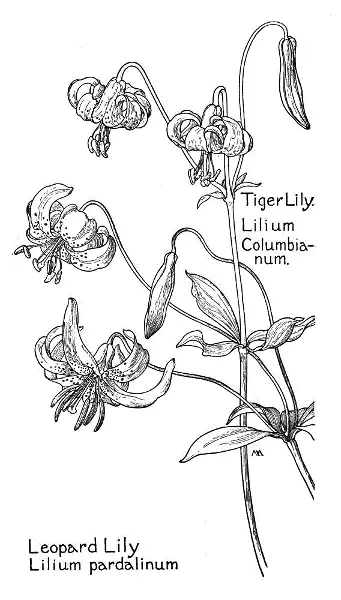
Tiger Lily – Lilium Columbianum.
Leopard Lily – Lilium pardalinum.
There are many kinds of Fritillaria, natives of the north temperate zone. In the East there are only cultivated ones, such as the familiar Crown Imperial, but we have a number growing wild in the West. They have bulbs with round, thick scales, developing into bulblets and sometimes resembling grains of rice. The flowers are bell-shaped, and nodding, with separate and nearly equal divisions, each with a nectar-spot at its base. They resemble Lilies, but the style is three-cleft, the honey-gland is a shallow pit and the flowers are smaller. The capsule is roundish and six-angled, containing numerous flat seeds. It is conspicuous and perhaps suggested the Latin name, meaning "dice-box."
Bronze Bells
Brown Fritillary
Fritillària atropurpùrea
Brown
Spring, summer
West
This plant is beautiful and decorative, and yet there is something weird about it. The flowers, an inch or more across, grow four or five in a cluster, on a smooth stalk about a foot tall, the long, narrow leaves scattered or in whorls. The bells, nodding on slender flower-stalks, are very unusual in coloring. They are greenish-yellow, streaked and spotted with maroon, and the long curling tips of the three-pronged pistil project like the forked tongue of an adder, so that somehow we feel that, in a previous existence, beautiful as it is now, it may have been a toad or some reptile. When we found this flower growing in the Grand Canyon, halfway down Bright Angel trail, it seemed entirely suitable to the mysterious spirit of the place. The general effect is bronze-color and the attractive name of Bronze Bells, or Mission Bells, is very appropriate. It has a small bulb of numerous, roundish scales. The pistils are often rudimentary.
Yellow Fritillary
Fritillària pùdica
Yellow
Spring
West, except Ariz.
A pretty little flower, a favorite with children, growing on grassy plains, with a smooth stem about six inches tall, and smooth, somewhat thickish, alternate or whorled leaves. The nodding flowers, about an inch long, are usually single, but sometimes as many as six on a stalk, various shades of yellow and orange, tinged with crimson and fading to dull-red. The smooth bulb is pure white, and made up of a number of rounded, thickish scales not resembling grains of rice, so the name Rice Root is not appropriate and the local Utah names, Crocus, Snowdrop, and Buttercup are absurd.
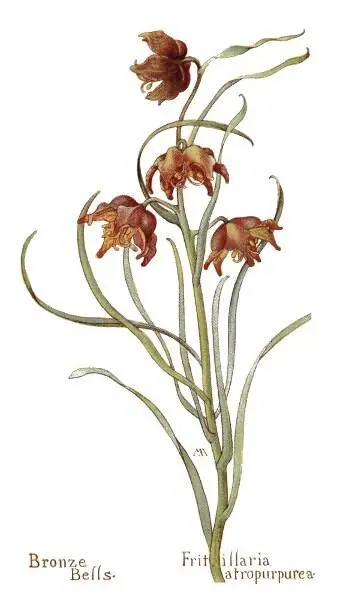
Bronze Bells – Fritillaria atropurpurea.

Yellow Fritillary – Fritillaria pudica.
There are several kinds of Yucca, natives of North and Central America; large plants, with dagger-like leaves, usually with long, thread-like fibers along the margins; flowers with bracts, nodding in a terminal cluster, somewhat bell-shaped, with six, thickish, white divisions; stamens short, with thickened filaments and small anthers; ovary with three united stigmas; capsule containing many, flat, black seeds. The flowers are pollinated by a little white moth, which lays its eggs in the ovary, but previously gathers pollen from many flowers and pushes it against the stigma after the eggs have been laid.
Our Lord's Candle
Spanish Bayonet
Yúcca Whípplei
White
Spring, summer
Cal., Ariz.
A noble plant, with no trunk, but sending up a magnificent shaft of flowers, from five to fifteen feet tall, springing from a huge, symmetrical bunch of dagger-like, bluish-green leaves. The cluster is composed of hundreds of waxy, cream-colored blossoms, sometimes tinged with purple, two inches across, crowded so closely together along the upper part of the stalk that the effect is a great, solid mass of bloom, three feet long. The white filaments are swollen, tipped with pale-yellow anthers; the pistil cream-color, with green stigmas. The large, white bracts are stiff and coarse, something like parchment, folded back so that the pinkish stalk is ornamented with a series of white triangles, symmetrically arranged. A hillside covered with hundreds of these magnificent spires of bloom, towering above the chaparral, is a wonderful sight. After they have blossomed, the tall, white stalks remain standing for some time, so that the hills look as if they had been planted with numbers of white wands.
The genus Cleistoyucca resembles Yucca, but the divisions of the flower are very thick and there is no style.
Joshua Tree
Tree Yucca
Cleistoyúcca arboréscens(Yucca)
Greenish-white
Spring, summer
Cal., Ariz., Utah
A tree, grotesque and forbidding in aspect, but with a weird sort of beauty, looming black against the pale desert landscape, with a great, thick, rough trunk, fifteen to thirty feet high, and a few thick, contorted branches, stretching out like a giant's arms and pointing ominously across the sandy waste. The branches are thatched with the shaggy husks of dead leaves and from their tips they thrust out a great bunch of dagger-like leaves and a big, ponderous cluster of pallid, greenish flowers or heavy, yellowish fruits. The coarse flowers are about two inches across, with a clammy smell like toadstools, and the bracts are dead white. This grows in the Mohave Desert and is at its best around Hesperia, where one may see the most fantastic forest that it is possible to imagine. Elsewhere it is smaller and more like other Yuccas in shape. It was called Joshua Tree by the early settlers, it is said because they fancied that its branches pointed towards the Promised Land. The fruits are relished by the Indians, who utilize the fibers from the leaves for weaving baskets, ropes, hats, horse-blankets, etc., and make a pulp from the stems, used for soap.

Our Lord's Candle – Yucca Whipplei.
[very small part of cluster]

There are several kinds of Trillium, of North America and Asia; with tuberous root-stocks; three, netted-veined leaves, in a whorl at the top of the stem; a single flower with three, green sepals, three petals, six, short stamens, and three styles; capsule berry-like and reddish, containing many seeds. The Latin name means "triple."
Читать дальшеИнтервал:
Закладка:
Похожие книги на «Field Book of Western Wild Flowers»
Представляем Вашему вниманию похожие книги на «Field Book of Western Wild Flowers» списком для выбора. Мы отобрали схожую по названию и смыслу литературу в надежде предоставить читателям больше вариантов отыскать новые, интересные, ещё непрочитанные произведения.
Обсуждение, отзывы о книге «Field Book of Western Wild Flowers» и просто собственные мнения читателей. Оставьте ваши комментарии, напишите, что Вы думаете о произведении, его смысле или главных героях. Укажите что конкретно понравилось, а что нет, и почему Вы так считаете.
